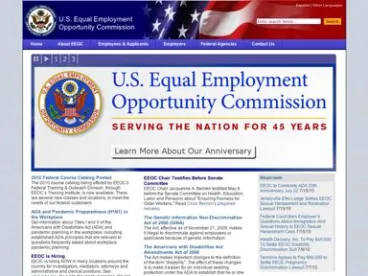On May 28, 2021, the US Equal Employment Opportunity Commission (EEOC) updated its ongoing guidance on COVID-19 issues in the workplace to cover additional topics relating to vaccination of employees. This updated guidance addresses a number of questions that have been arising now that a majority of the adult US population has been fully vaccinated against COVID-19.
-
Employers can require that all employees physically entering the workplace be vaccinated for COVID-19, subject to the employer’s obligation to provide reasonable accommodation to employees who are unable to receive the vaccine due to disability-related reasons, pregnancy, or because of sincerely-held religious beliefs, unless doing so would impose an undue hardship on the employer’s business.
-
Employers can request that employees provide confirmation of their COVID-19 vaccination status, e.g., the employee’s CDC “COVID-19 Vaccination Record Card” or records from a pharmacy, public health clinic, or health care provider. If the employer requires that the employee provide it with a copy of this information (instead of only reviewing and confirming), it must maintain that information as a confidential medical record, separate from the employee’s personnel file.
-
Employers may offer its employees the opportunity to receive the COVID-19 vaccine from the employer or an agent of the employer (e.g., a third-party provider that comes onto the employer’s site to offer vaccinations to employees), so long as it voluntary – meaning the employee can choose whether or not get the vaccine from the employer or its agent – and so long as the opportunity is offered to all employees and not only certain groups. If an employer does offer voluntary vaccinations, it may ask disability-related screening questions, which generally is prohibited under the Americans with Disabilities Act.
-
Employers may offer incentives, which can include grants of additional paid or unpaid time off or even cash payments, to employees who voluntarily provide proof that they have received the COVID-19 vaccine. As noted above, if the employer elects to retain copies of the documentation provided by employees, it must maintain that information as a confidential medical record. Employers additionally may offer incentives to employees to provide proof that the employees’ family members also have received the COVID-19 vaccine without violating the federal Genetic Information Nondiscrimination Act (GINA).
-
Employers also may offer incentives to employees to receive vaccination against COVID-19 from the employer or its agent, so long as the amount of the incentive is not so substantial that employees would feel pressured into receiving the vaccine, which necessarily requires that they disclose medical information to their employer or its agent. The EEOC’s guidance confirms however that an employer cannot offer an incentive to an employee in return for the employee’s family members getting vaccinated by the employer or its agent, because in that case, it would require the employer or its agent to obtain medical information about the employee’s family member, which would then lead to the employer’s receipt of genetic information in the form of family medical history of the employee, which would violate the GINA. That does not mean that the employer cannot offer to vaccinate employees’ family members, only that it cannot offer the employee an incentive to have his or her family members vaccinated.
The EEOC’s updated guidance is welcome information to employers as they formulate their vaccination policies and their strategies for returning employees to the workplace. However, despite this guidance, employers should confirm with counsel any specific vaccination-related plans to ensure that they comply with federal, state, and local laws, regulations, and order, as, for example, notwithstanding the federal guidance, some states have passed laws – and others have pending bills – that prohibit employers in those states from requiring employees be vaccinated against COVID-19 as a condition of hire or of continued employment (see our post covering this topic here).




 />i
/>i
